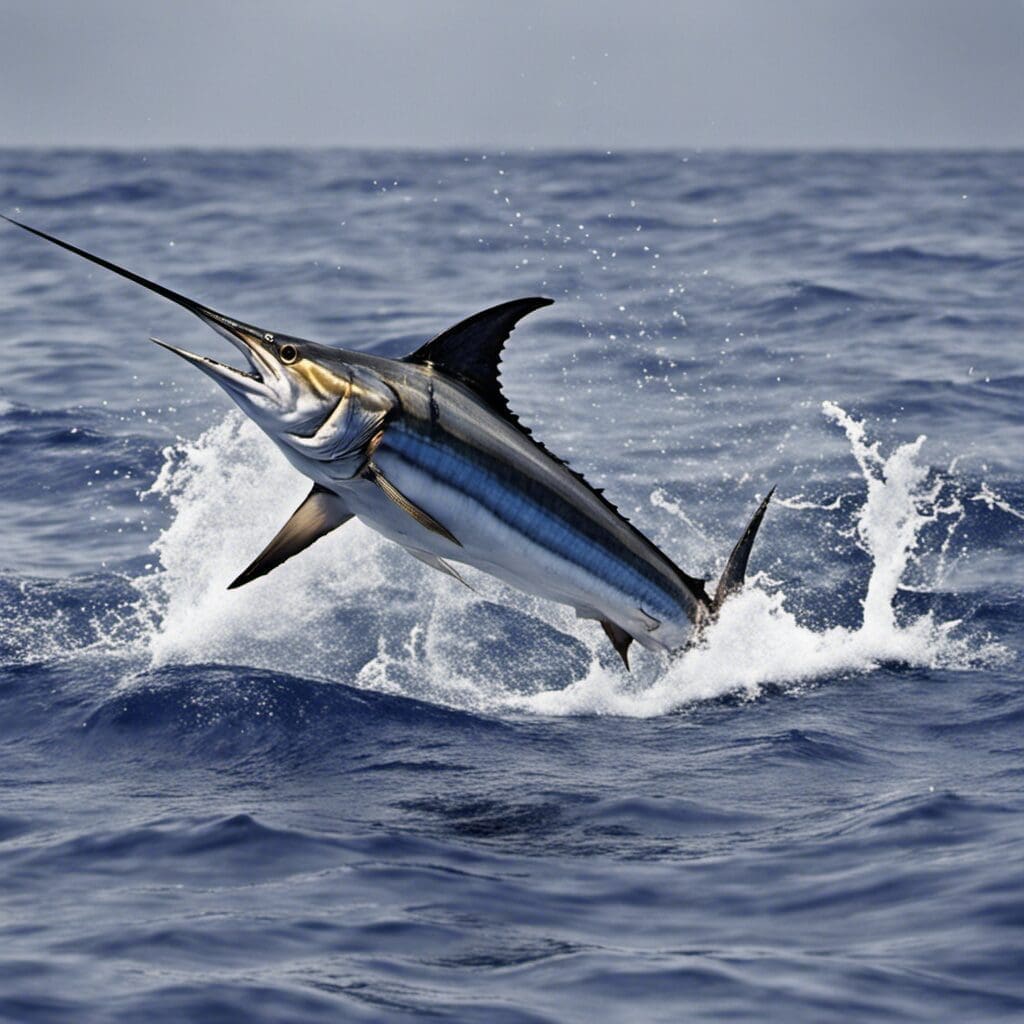Introduction
Species Name: Blue Marlin
Family Name: Istiophoridae
Conservation Status
Current Status: Vulnerable
Conservation Efforts: Protected in numerous regions and countries, release programs in operation
Statistics
| Statistic | Average | Range |
|---|---|---|
| Length | 11ft (Female), 6ft (Male) | 14ft-16ft (Female), 7ft-10ft (Male) |
| Weight | 1190 lbs (Female), 200 lbs (Male) | 1400 lbs-1800 lbs (Female), 300 lbs-500 lbs (Male) |
| Average Lifespan | 27 years | N/A |
| Other | Fastest swimming speed: 50 MPH | N/A |
Distribution
Regions: Atlantic and Indian Oceans, the Gulf of Mexico, and the Caribbean Sea.
Migration Patterns: They migrate south in winter and north in the summer.
Habitats
Water Type: Saltwater
Depth Range: Surface-660ft
Temperature Range: 70°F-86°F
When and Where to See
Seasonal Patterns: They are active all year round.
Time of Day: They are most active during daytime.
Best Fishing Locations
Top 10 Places
- Florida Keys, USA
- Cairns, Australia
- Hawaii, USA
- Cabo San Lucas, Mexico
- Bimini, Bahamas
- Guatemala
- Ascension Island, South Atlantic
- Panama
- Madeira, Portugal
- Gold Coast, Australia
General Tips
Look for jumping marlin or birds diving. These are signs of bait fish which marlin preys on.
How to Catch
Preferred Bait: Mackerel, mullet, bonito, squid
Fishing Techniques: Trolling
Best Time: Early morning or late afternoon
Identification Guide
Physical Characteristics: Deep blue-black top, silvery white bottom, pointed bill, long dorsal fin.
Comparison with Similar Species: Swordfish has a longer, flat bill.
Culinary
How to Cook: Grill, broil, or smoke
Taste Profile: Mild, meaty
Nutritional Information: High in protein, Vitamin B-12, Selenium
Additional Information
Behavior: Solitary, Feeds mostly on smaller fish and squid
Predators and Threats: Sharks, humans (overfishing)
Cultural/ Historical Significance: Popular symbol in literature and film, e.g. ‘The Old Man and The Sea’ by Hemingway

